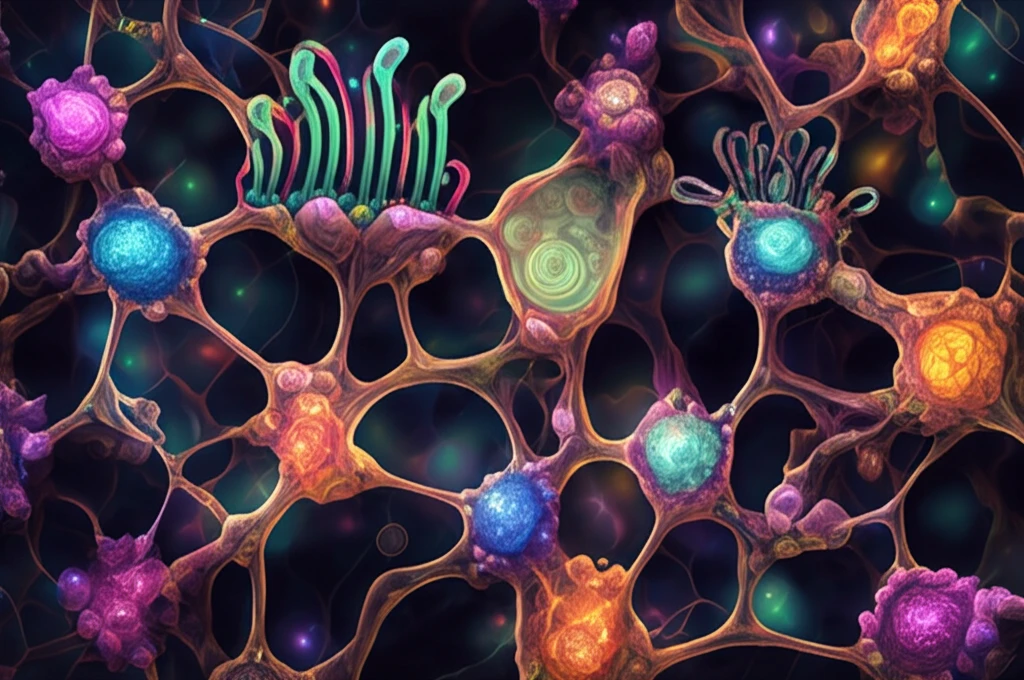
Unlocking Pancreatic Cancer: The Role of Notch Receptors and Ligands
"A deep dive into how understanding Notch signaling pathways can revolutionize diagnosis and treatment of pancreatic ductal adenocarcinoma (PDAC)."
Pancreatic cancer, particularly pancreatic ductal adenocarcinoma (PDAC), stands as a formidable health challenge, ranking as the fourth leading cause of cancer-associated mortality in developed nations. PDAC's aggressive nature and often late diagnosis contribute to its dismal prognosis, underscoring the urgent need for innovative diagnostic and therapeutic approaches.
Central to understanding PDAC's complexities is the Notch signaling pathway, a crucial regulator of embryonic development and tumorigenesis. This pathway involves four Notch receptors (Notch1-4) and five ligands (Jagged1, Jagged2, DLL1, DLL3, and DLL4). The intricacies of Notch signaling in PDAC—whether it acts as an oncogene or a tumor suppressor—depend heavily on the specific tissue type, highlighting the need to unravel the distinct roles of Notch receptors within the same tissue.
Recent research has focused on mapping the expression of all Notch receptors and their ligands in PDAC tissues and cells to address this critical gap. By employing immunohistochemistry to analyze paraffin-embedded PDAC tissue samples and immunofluorescence to examine pancreatic cancer cell lines (HPAC and PANC-1), scientists aim to clarify how these molecular players contribute to PDAC development and progression, paving the way for more targeted interventions.
Decoding Notch Receptors: What Does Their Expression Tell Us About Pancreatic Cancer?

The study meticulously examined the expression of Notch receptors and their ligands in PDAC, yielding several key insights. Immunohistochemical analysis revealed increased levels of Notch1 and Notch3 in PDAC tissues, whereas Notch2 and Notch4 levels were decreased. These findings suggest that Notch1 and Notch3 may play pivotal roles in promoting PDAC, while Notch2 and Notch4 might have different, potentially tumor-suppressive functions.
- Notch1 and Notch3: Increased in PDAC tissues, suggesting oncogenic roles.
- Notch2 and Notch4: Decreased in PDAC tissues, indicating potential tumor-suppressive functions.
- DLL1, DLL3, and DLL4: Elevated in HPAC and PANC-1 cells and PDAC tissue samples.
- Jagged1 and Jagged2: Low expression, suggesting a less critical role in PDAC development.
The Future of Pancreatic Cancer Treatment: Targeting Notch Signaling
These findings underscore the potential of targeting Notch1 and Notch3, along with their ligands DLL1, DLL3, and DLL4, as a therapeutic strategy for pancreatic cancer. By selectively modulating the Notch signaling pathway, researchers hope to disrupt the mechanisms that drive tumor growth and metastasis, offering new hope for patients battling this devastating disease. Future studies focusing on larger patient cohorts and in-depth molecular analyses will further refine our understanding of the Notch signaling pathway in PDAC, ultimately leading to more effective and personalized treatment approaches.
